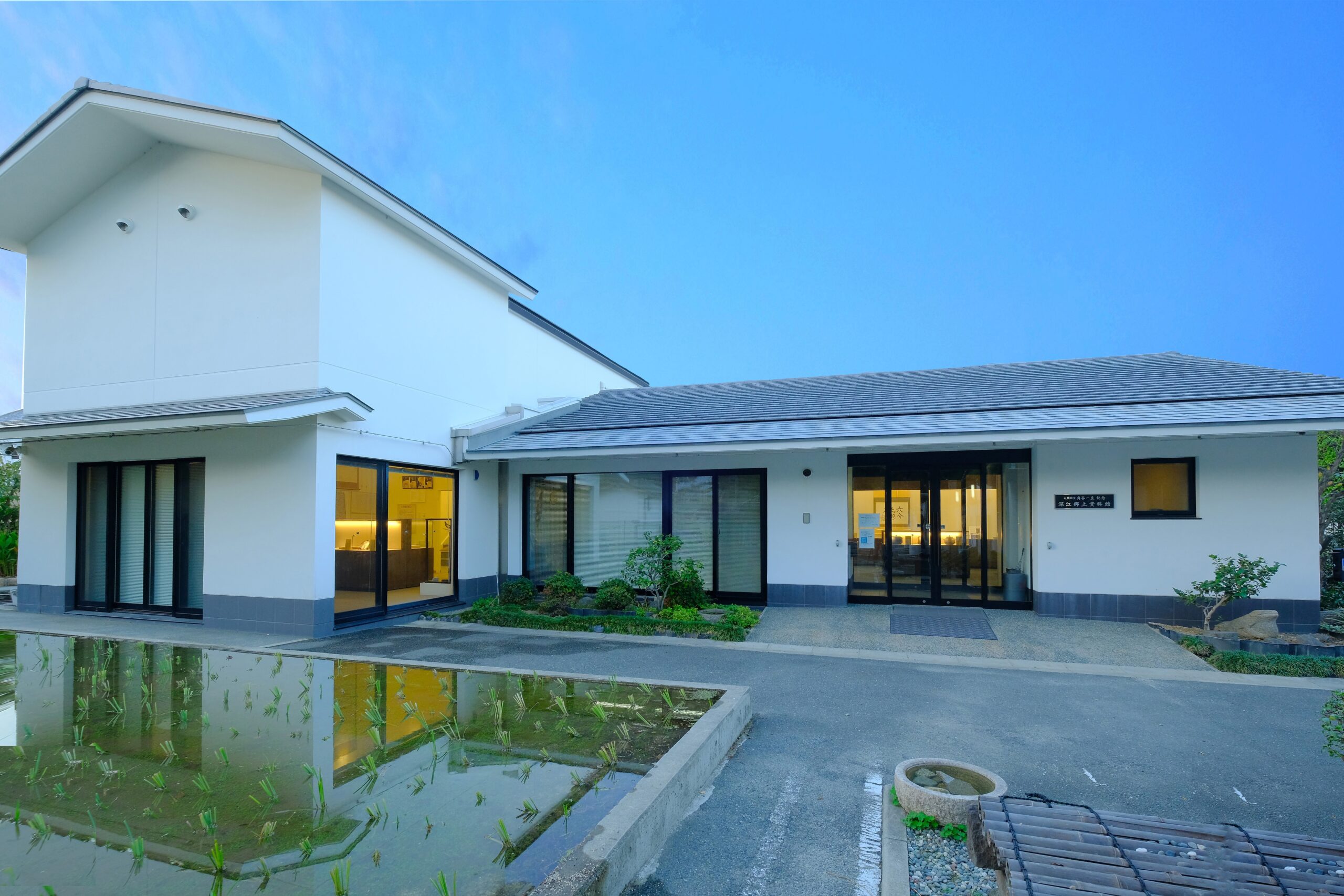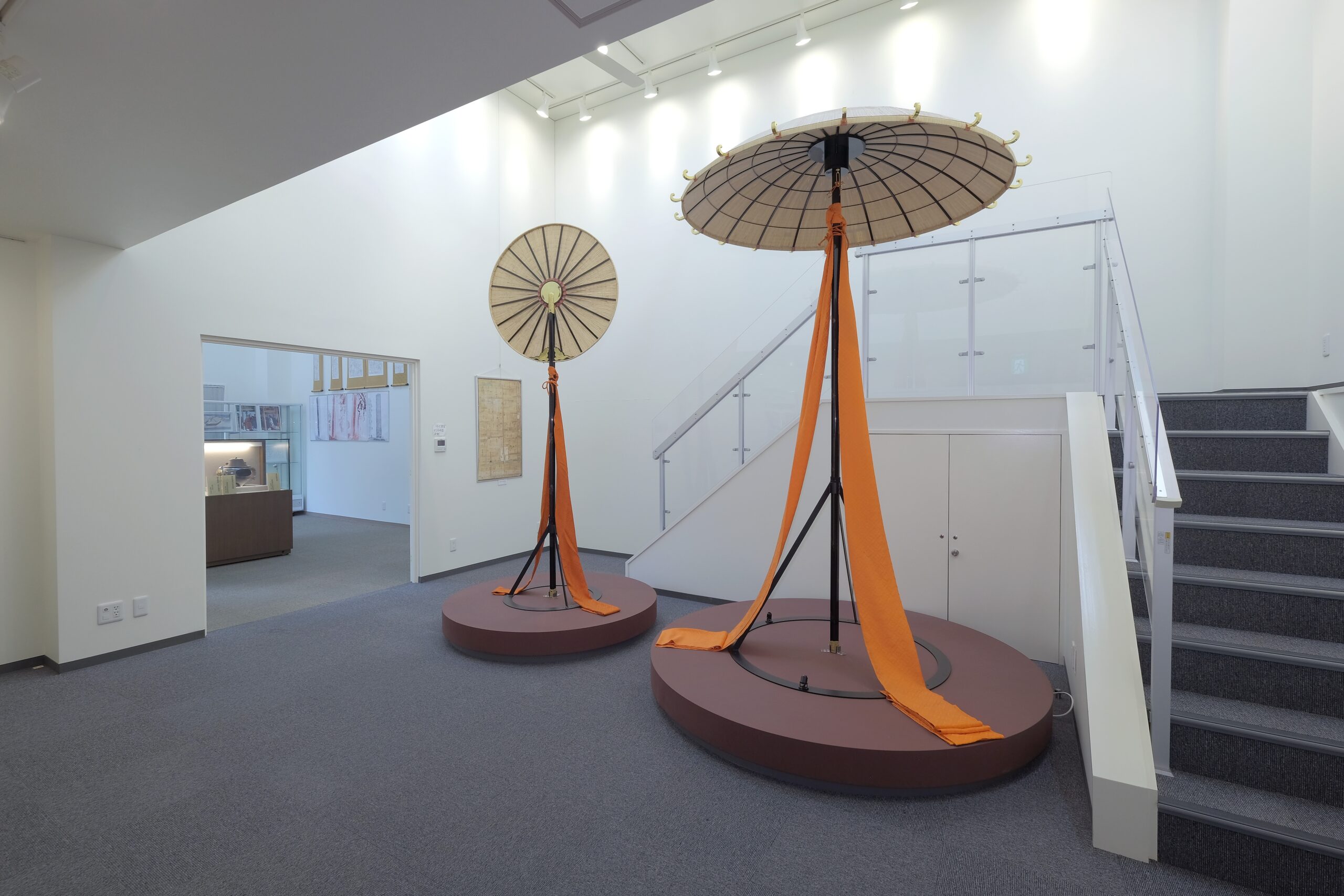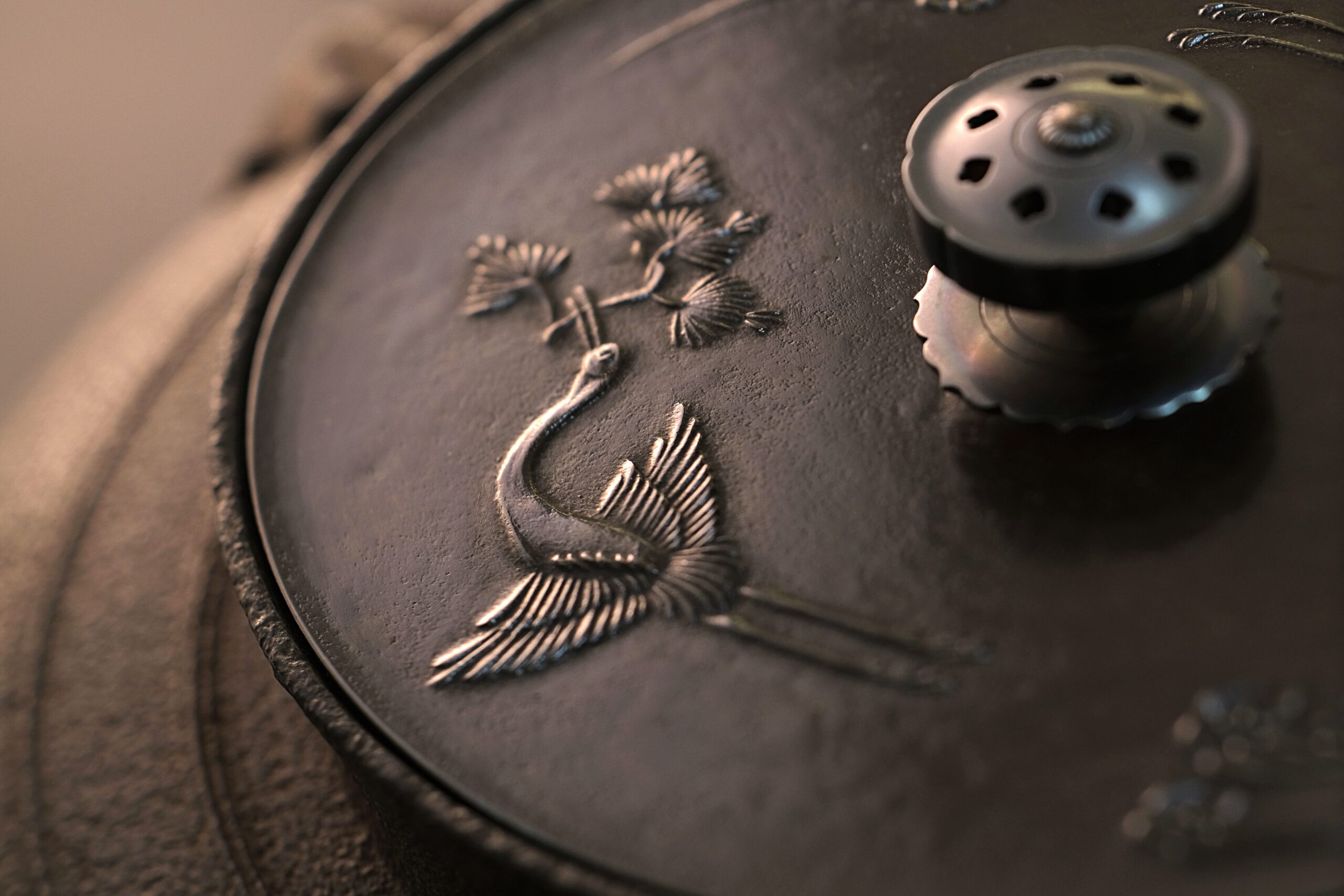Main
Building
Preserving Fukae’s Culture

The Fukae Heritage Museum Main Building was opened in 2010 with the aim of preserving and promoting traditional crafts that have been passed down in the Fukae area, such as metal casting and sedge work. On display are the tea kettles from the Kakutani family, represented by Living National Treasures Kakutani Ikkei and Yukei, as well as the sedge hats dedicated to Ise Grand Shrine during the Shikinen Sengu ceremony. The museum also exhibits sacred treasure mirrors, as well as many traditional crafts including Japanese swords, with the aim of promoting traditional Japanese culture to a broader audience.
Fukae’s Sedge Craftsmanship

The history of Fukae’s sedge craft goes back nearly 2,000 years. Originally, Fukae was a small island with an abundance of high-quality sedge grass. The Kasanui clan migrated there from Nara, where they began to craft and offer up ritual instruments, including sugegasa, for rituals such as the Shikinen Sengu (“grand rebuilding”) and Daijosai (“great food offering”) rituals at Ise Grand Shrine, one of the most culturally significant shrines in Japan. In the early modern period, there was an increase in the number of people passing through Fukae on their way to this shrine. It is believed that Fukae’s sedge hats not only protect the wearer from the sun and rain, but also ward off evil spirits, encouraging many people to come to buy sedge hats in Fukae to pray for safe journeys. Today, Fukae’s sedge craftwork techniques have been designated an intangible cultural asset by the city of Osaka and are being passed down by the Fukae Sedgework Preservation Society. The main crafts include sedge hats, colored paper hangings, and tea ceremony-related cushions and kettle mats. In addition, the sedge hats used for the Shikinen Sengu and Daijosai rituals at Ise Grand Shrine are still being offered up to this day.
The Kakutani Family and Metal Castings

Originally a family of carpenters for generations, the first in the Kakutani family to craft tea kettles was Minosuke Kakutani in the early 20th century. His sons Yosai, Ikkei, and Shason inherited the craft and also became kettle makers.
Yosai Kakutani (1902-1979) was granted permission to work at the Urasenke school of tea ceremony school founded by Sen no Rikyu, the originator of Japanese tea ceremony culture. Ikkei Kakutani (1904-1999) had many achievements in Japanese traditional crafts exhibitions, and in 1978 was recognized as a holder of important intangible cultural property (tea ceremony kettles), thus being designated a Living National Treasure. Shason Kakutani was also active in the eclectic style of his two older brothers and had a track record of participating in various craft exhibitions.
Ikkei Kakutani’s workshop has now been taken over by his sons, Seiichi and Yukei, who still manufacture tea kettles.
Yukei Kakutani, like his father, was recognized as a Living National Treasure in 2021.
The achievements of the Kakutani family go beyond the crafting of tea kettles. At the Shikinen Sengu ritual at Ise Grand Shrine, Ikkei Kakutani dedicated 31 sacred treasure mirrors made of white bronze. Similarly, at the 62nd Shikinen Sengu ritual in 2013, Seiichi and Yukei also offered up 31 sacred mirrors. In this way, the Kakutani family has greatly contributed to the preservation and development of Japan’s traditional culture and technology.